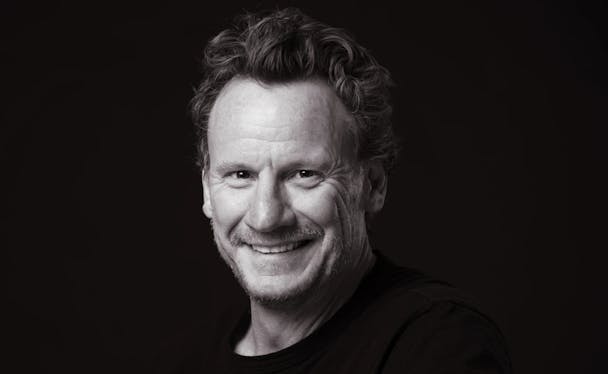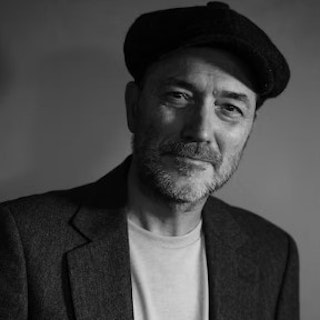Nick Law says agencies need to stop being so scared of tech if they’re to survive
The Drum catches up with the storied creative in New York, where he advocates for taste and craft when using AI in advertising, advising agencies to “grab a set of creative people, get fluent with it and use it every day.”

Nick Law, creative chairperson at Accenture Song
It is well-reported that traditional agencies are facing existential challenges in a rapidly evolving digital landscape. But a focus on financial metrics and scalability will not help them claw their way back to viability, according to Nick Law, creative chairperson at Accenture Song. He tells The Drum they have “shifted too far towards building scalability and financial metrics, at the expense of creativity.”
In many ways, the move was rational in an era where a managerial new guard aimed to grow agencies after they took over from the founding fathers of the modern industry, the likes of Bill Bernbach and David Ogilvy.
“Agencies became very operational and, in the absence of being run by creative leaders, they became financially focused,” says Law. “They looked at spreadsheets to figure out how to make money and the things they needed to do to scale. It is hard to scale creativity, right? So they tended to focus on media, even giving away the creative product for free. But now, with everything becoming commoditized, the only defensible product they have is creativity.”
However, he claims the culture also created two tribes of left- and right-brainers – those who understand how the media plumbing worked and those responsible for the content it was designed to pump.
This is another strategic misstep, he says. With a career that saw him start as a graphic designer Down Under before crossing the Rubicon into advertising and then experiencing tech, Law has been left convinced that both groups have to work hand in glove. He implemented this strategy at RG/A, which he says was the essence of its rise to the top.
“By the time I got to RG/A in 2008, I had danced with all these tribes and decided to stitch them together. I organized the agency around stories and systems. We knew we could design websites, but we also knew that if the stories we were putting on these sites were not good, we were not doing our job properly.
“We wanted to put stories and systems together, the same way as Bill Bernbach had put copy and art together. It was about spatial thinking and temporal thinking.
“To me, it makes perfect sense. But the reason it has not been replicated more is it is very difficult. But, and this is the reason we are also taking this approach here at Accenture Song, it offers real value.”
As a specific example of the fruits of this approach, Law cites Accenture Song’s famous Coinbase Super Bowl commercial, which almost broke the internet by featuring (initially without explanation) a QR code roaming around the TV screen like an 80s video game icon.
Another of his previous employers also has a similar value system, he says. “Apple has managed to integrate software and hardware like no other. It is a moat for it. At RG/A, we, too, wanted to bring disparate groups together to create something new. So, to me, that’s where the industry is going. AI, for example, is synthesizing and collapsing our world into one thing.”
In the marketing world, the word ‘collapsing’ is usually followed by the word ‘funnel.’ This article is no exception, as Law points out that creatives need to understand the technical drivers that are inverting customer journeys.
“All of a sudden, we need to have an awareness that everything has changed. The conventions you first need to raise awareness of a brand, which conventions set and then narrowed consideration and so on are gone thanks to social. I bought myself a pair of trainers from social in about 10 seconds, before I even knew what the brand was!”
He argues that bringing techies and creatives together also reflects an age-old industry reality – tech has also shaped creativity. “When TV and radio came along, everything was framed around these mediums.” The 30-second ad spot gave birth to the concept of ‘The Big Idea,’ which has dominated ad industry discourse for years and is still a feature of many an agency pitch to this very day.
Law says the approach is obsolete as audiences turn away from the linear TV break. “Creatives can no longer rely on these frames of reference as they contemplate a social-first world.” He champions a model that considers context, concept and craft, emphasizing the fluidity required to engage modern audiences effectively.
With his stubble, unruly hair and black T-shirt, Law looks like the kind of creative central casting might provide, the antithesis of the sort of personality you’d expect to find in the plush, sumptuously appointed corporate environment of Accenture Song New York HQ.
But how long will such creative types stalk the floors of corporate Manhattan? How will the likes of Law fare as AI matures?
“Because it’s such an early point of the technology, nobody is talking about taste and craft. We’re all so astonished by the tech that it’s a bit like the early days of film when the audience screamed as the train came towards them. They weren’t looking at the composition. They weren’t saying, ‘Oh, the lighting is really interesting, I love the narrative arc.’ They’re just like, ‘Fuck, look at this amazing technology.’ And that’s what we’re doing now when we’re looking at like Midjourney and saying, ‘Oh, that person looks real.’
“So we’re at the same point as early film and this is why agencies need to stop being so scared of technology. They need to grab a set of creative people, get fluent with it and use it every day. When people get used to it, the creative concept and the taste will become more important than the technology.”
Anyway, Law believes that Sam Altman, the founder of OpenAI, was simply wrong when he recently said that AI would replace 95% of creative jobs. Referring to one of his heroes from his graphic design days, he points out: “There’s no algorithm that can anticipate the mind of a David Carson, the sort of person who enjoys throwing a spanner into the works. You will always need creatives like Carson who can counter where technology is taking us.”

